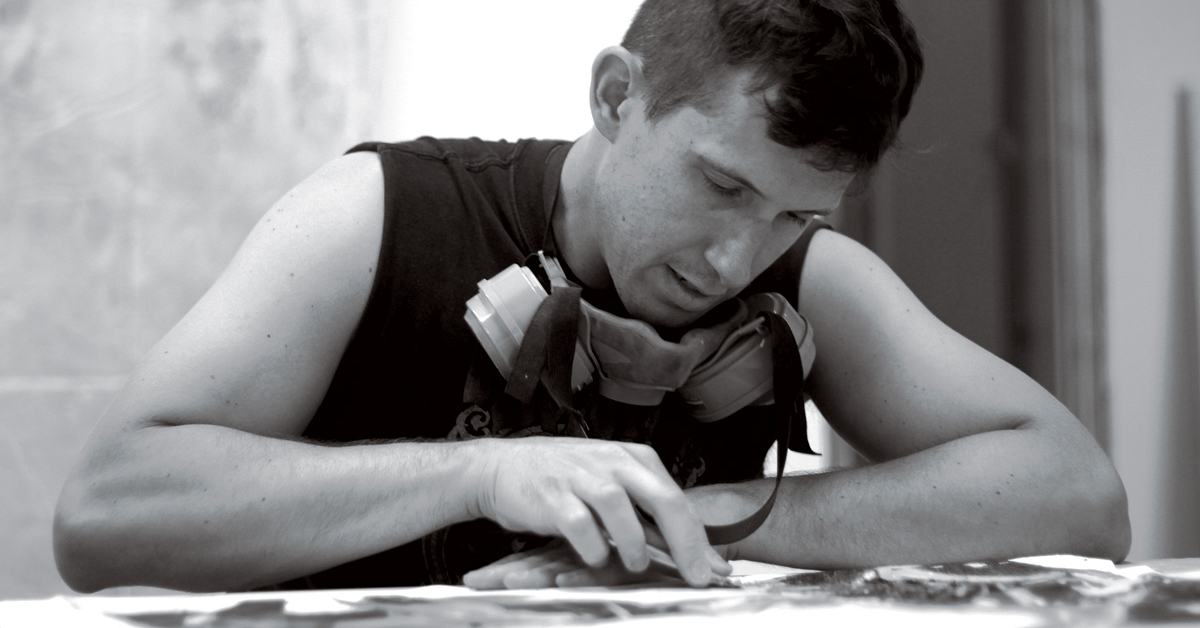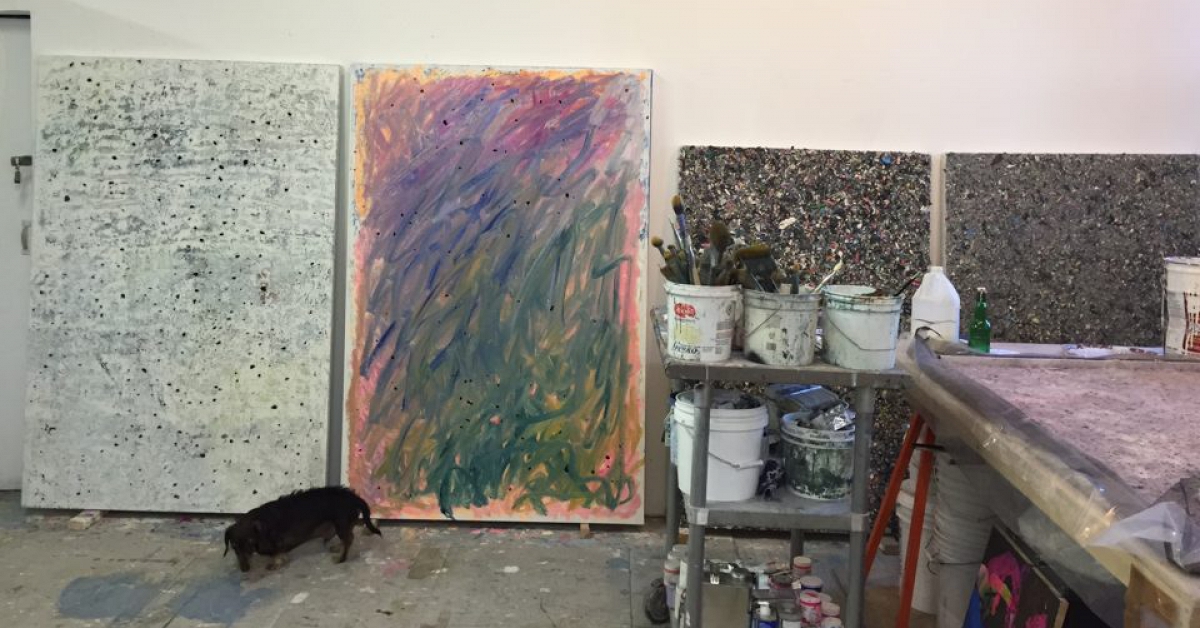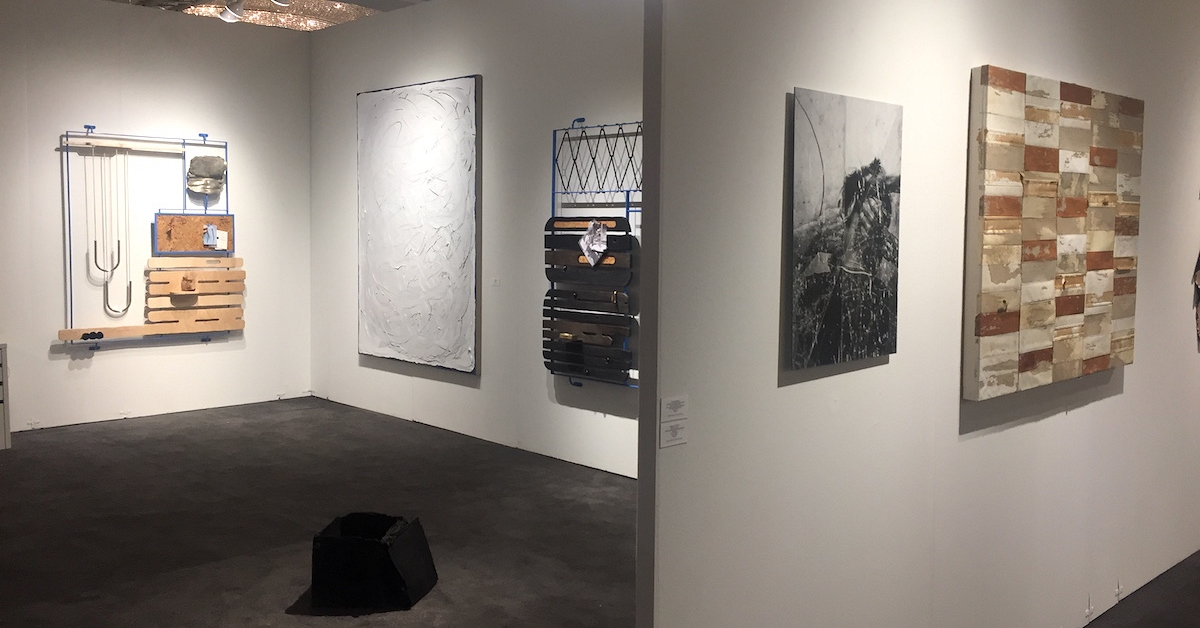The Browser: MoMA’s Gripping ‘New Photography’ Goes Behind the Lens
ARTnews / Mar 22, 2018 / by Alex Greenberger / Go to Original
In recent years, photographers have been turning inward, looking not just at what goes on in front of the camera but also what’s happening behind it. Borne out of this phenomenon is “Being: New Photography 2018,” the latest exhibition in the Museum of Modern Art’s ongoing series of showcases for up-and-coming photographers. “Being” is a gripping survey of how photographers today are dealing head-on with the knotty things that make us, us—the ways communities, politics, and systems influence various people’s identities, for better and worse.
This is a different direction from the last “New Photography” show, 2015’s “Ocean of Images,” a mind-numbingly academic exploration of how pictures circulate, both on- and offline. A lot has changed since then. A racist, sexist xenophobe was elected President of the United States, a wave of far-right nationalism has swept through large parts of the world, and new technologies have been widely released. “Being,” a show of 17 artists organized by MoMA assistant curator Lucy Gallun, is partly a response to all that. It’s a political show, but not a ham-fisted one, and the rare biennial-style exhibition that actually does feel reflective of our current moment.
Re-photography—the technique involving taking pictures of pictures—figures prominently in “Being,” most notably in a work by Huong Ngo and Hong-An Truong called The opposite of looking is not invisibility. The opposite of yellow is not gold. (2016). Ngo and Truong shot photographs of banal snapshots that their families collected in albums; between each photograph, the artists have placed barely visible text that suggests a police interrogation or a testimony. (“Well, sir, if we could get rid of the illegals, it would open up a considerable number of slots,” says a general in one piece of dialogue taken from a real U.S. Congressional meeting during the 1970s.) They also photographed the album covers: one has an image of a river rushing through a green valley, the other a couple kissing by the fading light of a blazing red sunset. The artists seem to offer them as a metaphor for the durability of family over time, and for the importance of recognizing shared histories.
Harold Mendez’s work is also based on found photography, but unlike Ngo and Truong’s subtle project, some of his photography relies on dramatic shifts in scale for effect. For his piece entitled Sin nombre (2017–18), Mendez has blown up a glass slide he found in Havana—it shows a man on horseback—into an image that he transferred onto a 15-foot-long aluminum plate. Scratches resulting from the transfer process spider across the image of the rider, who, rendered here in faded black and white, is spectral—he’s a hanger-on from a different era. Mendez’s moving work—as well as Em Rooney’s sculptural pieces, which encase pictures from her personal archive in stacks of a paper, steel ladders, and see-through sheets of crystal—demonstrate that sometimes, when context is lost, personal meaning is gained.
Other artists in “Being” aren’t content to simply re-photograph images. Paul Mpagi Sepuya cuts up, recombines, and re-photographs his own pictures to create abstract compositions that merge nude male bodies, camera gear, and photoshoot props. For Yazan Khalili’s hypnotic video Hiding Our Faces Like a Dancing Wind (2016), footage of a woman photographing herself with an iPhone plays on a computer screen as cryptic text is typed and images of masks are analyzed by an algorithm, creating a rabbit hole of pictures within pictures within videos within pictures within videos within a video.
The pieces in “Being” that aren’t physically collaged often feel as if they are. Through a clever use of mirrors, B. Ingrid Olson makes puzzling photographs of women’s bodies that make you question what’s a ready-made image and what isn’t. Aïda Muluneh’s brightly colored photographs feature anonymous female characters that appear to be cut-and-pasted together—one shows a woman painted in white who sprouts two sets of arms, one of them rendered chili-pepper red. Shilpa Gupta’s pictures contain written stories from people whose surnames have been altered at some point in their lives, for reasons both political and not; Gupta severs, then mixes and matches these photographs, disassembling and re-assembling her subjects’ identities to produce new, hybrid personas.
But there is also work in “Being” that feels refreshingly traditional—a return to photography’s roots—even if the subject matter is not. Sam Contis’s elegant documentary photographs of students at an all-male college in California allude to the history of straight, white, male American photographers journeying into the American West, albeit in an unusual way. They show masculinity that’s American as apple pie, as well as subversions of it. One work features a man wearing a denim dress, sprawled out on a field of grass like an Ingres odalisque.
Being also serves as proof positive of the current craze for portraiture. Andrzej Steinbach’s sleek black-and-white images of gender-ambiguous Europeans and Stephanie Syjuco’s visually dazzling self-portraits—each done in a style evoking colonialist photography (with meta alterations, such as the inclusion of color calibration bars)—suggest new possibilities for the genre.
So, too, do two gallery shows currently on view in New York. At Sikkema Jenkins & Co. in Chelsea, Deana Lawson continues pushing her style in new directions. Her beguiling photographs of black families look, at first glance, like quick-witted documentary works, but they are staged. One features a man and woman photographed in a way that makes them seem like lovers, with him standing behind her, his hands gently gripping her hips. But, as Doreen St. Félix has noted in the New Yorker, before Lawson took their photo, these two barely knew each other. The point of Lawson’s trickery is to show that images lie. People perform their identities for the public, especially when a camera is present.
In Soweto Queen (2017), a woman wearing nothing but a watch poses on a sofa, her eyes locked on the camera’s lens. Two remote controls, a set of keys, and some trinkets lie strewn around her. More than just props, the scattering of objects grounds her in a reality that may or may not exist.
By far the weirdest—and by far my favorite—of Lawson’s new works is Nation (2018), a picture of three men in a living room, with two of them seated on a leather couch. One gestures toward the camera. The other, who lounges, wears a metal contraption that holds his mouth open. In the upper right-hand corner of the work, Lawson has inserted an appropriated archival picture of something strange: George Washington’s dentures, according to a press release.
At 47 Canal gallery, a show of new work by Elle Pérez further questions what can be gleaned from portrait photography. In Ian (2017/18), a person fresh out of the shower, hair dripping wet, looks knowingly into the camera’s eye. Like many photographs by Pérez, it is formally stunning, particularly in its use of color: warm red light dominates, but a tiny sliver of baby blue slices through a cracked-open door in the background. Pérez’s sophisticated use of color puts them in a league of young photographers who’ve begun experimenting, to magnificent effect, with bold hues, such as Farah Al Qasimi, Awol Erizku, and Ketuta Alexii-Mekhishvili.
Ian also features an unexpected detail: Pérez’s own image, caught in a mirror behind their subject, one indication that these aren’t portraits in the traditional sense. In another work, a subject’s bloody hand hides their genitals in a close-up shot, and in yet another, a different person’s hand—possibly Pérez’s—tenderly reaches out toward a pair of legs in front of the camera. In Binder (2015/18), a chest-flattening device dangles limply from a wire hanger attached to a shower rod; it’s a perfect stand-in for its wearer.
This is a different direction from the last “New Photography” show, 2015’s “Ocean of Images,” a mind-numbingly academic exploration of how pictures circulate, both on- and offline. A lot has changed since then. A racist, sexist xenophobe was elected President of the United States, a wave of far-right nationalism has swept through large parts of the world, and new technologies have been widely released. “Being,” a show of 17 artists organized by MoMA assistant curator Lucy Gallun, is partly a response to all that. It’s a political show, but not a ham-fisted one, and the rare biennial-style exhibition that actually does feel reflective of our current moment.
Re-photography—the technique involving taking pictures of pictures—figures prominently in “Being,” most notably in a work by Huong Ngo and Hong-An Truong called The opposite of looking is not invisibility. The opposite of yellow is not gold. (2016). Ngo and Truong shot photographs of banal snapshots that their families collected in albums; between each photograph, the artists have placed barely visible text that suggests a police interrogation or a testimony. (“Well, sir, if we could get rid of the illegals, it would open up a considerable number of slots,” says a general in one piece of dialogue taken from a real U.S. Congressional meeting during the 1970s.) They also photographed the album covers: one has an image of a river rushing through a green valley, the other a couple kissing by the fading light of a blazing red sunset. The artists seem to offer them as a metaphor for the durability of family over time, and for the importance of recognizing shared histories.
Harold Mendez’s work is also based on found photography, but unlike Ngo and Truong’s subtle project, some of his photography relies on dramatic shifts in scale for effect. For his piece entitled Sin nombre (2017–18), Mendez has blown up a glass slide he found in Havana—it shows a man on horseback—into an image that he transferred onto a 15-foot-long aluminum plate. Scratches resulting from the transfer process spider across the image of the rider, who, rendered here in faded black and white, is spectral—he’s a hanger-on from a different era. Mendez’s moving work—as well as Em Rooney’s sculptural pieces, which encase pictures from her personal archive in stacks of a paper, steel ladders, and see-through sheets of crystal—demonstrate that sometimes, when context is lost, personal meaning is gained.
Other artists in “Being” aren’t content to simply re-photograph images. Paul Mpagi Sepuya cuts up, recombines, and re-photographs his own pictures to create abstract compositions that merge nude male bodies, camera gear, and photoshoot props. For Yazan Khalili’s hypnotic video Hiding Our Faces Like a Dancing Wind (2016), footage of a woman photographing herself with an iPhone plays on a computer screen as cryptic text is typed and images of masks are analyzed by an algorithm, creating a rabbit hole of pictures within pictures within videos within pictures within videos within a video.
The pieces in “Being” that aren’t physically collaged often feel as if they are. Through a clever use of mirrors, B. Ingrid Olson makes puzzling photographs of women’s bodies that make you question what’s a ready-made image and what isn’t. Aïda Muluneh’s brightly colored photographs feature anonymous female characters that appear to be cut-and-pasted together—one shows a woman painted in white who sprouts two sets of arms, one of them rendered chili-pepper red. Shilpa Gupta’s pictures contain written stories from people whose surnames have been altered at some point in their lives, for reasons both political and not; Gupta severs, then mixes and matches these photographs, disassembling and re-assembling her subjects’ identities to produce new, hybrid personas.
But there is also work in “Being” that feels refreshingly traditional—a return to photography’s roots—even if the subject matter is not. Sam Contis’s elegant documentary photographs of students at an all-male college in California allude to the history of straight, white, male American photographers journeying into the American West, albeit in an unusual way. They show masculinity that’s American as apple pie, as well as subversions of it. One work features a man wearing a denim dress, sprawled out on a field of grass like an Ingres odalisque.
Being also serves as proof positive of the current craze for portraiture. Andrzej Steinbach’s sleek black-and-white images of gender-ambiguous Europeans and Stephanie Syjuco’s visually dazzling self-portraits—each done in a style evoking colonialist photography (with meta alterations, such as the inclusion of color calibration bars)—suggest new possibilities for the genre.
So, too, do two gallery shows currently on view in New York. At Sikkema Jenkins & Co. in Chelsea, Deana Lawson continues pushing her style in new directions. Her beguiling photographs of black families look, at first glance, like quick-witted documentary works, but they are staged. One features a man and woman photographed in a way that makes them seem like lovers, with him standing behind her, his hands gently gripping her hips. But, as Doreen St. Félix has noted in the New Yorker, before Lawson took their photo, these two barely knew each other. The point of Lawson’s trickery is to show that images lie. People perform their identities for the public, especially when a camera is present.
In Soweto Queen (2017), a woman wearing nothing but a watch poses on a sofa, her eyes locked on the camera’s lens. Two remote controls, a set of keys, and some trinkets lie strewn around her. More than just props, the scattering of objects grounds her in a reality that may or may not exist.
By far the weirdest—and by far my favorite—of Lawson’s new works is Nation (2018), a picture of three men in a living room, with two of them seated on a leather couch. One gestures toward the camera. The other, who lounges, wears a metal contraption that holds his mouth open. In the upper right-hand corner of the work, Lawson has inserted an appropriated archival picture of something strange: George Washington’s dentures, according to a press release.
At 47 Canal gallery, a show of new work by Elle Pérez further questions what can be gleaned from portrait photography. In Ian (2017/18), a person fresh out of the shower, hair dripping wet, looks knowingly into the camera’s eye. Like many photographs by Pérez, it is formally stunning, particularly in its use of color: warm red light dominates, but a tiny sliver of baby blue slices through a cracked-open door in the background. Pérez’s sophisticated use of color puts them in a league of young photographers who’ve begun experimenting, to magnificent effect, with bold hues, such as Farah Al Qasimi, Awol Erizku, and Ketuta Alexii-Mekhishvili.
Ian also features an unexpected detail: Pérez’s own image, caught in a mirror behind their subject, one indication that these aren’t portraits in the traditional sense. In another work, a subject’s bloody hand hides their genitals in a close-up shot, and in yet another, a different person’s hand—possibly Pérez’s—tenderly reaches out toward a pair of legs in front of the camera. In Binder (2015/18), a chest-flattening device dangles limply from a wire hanger attached to a shower rod; it’s a perfect stand-in for its wearer.






